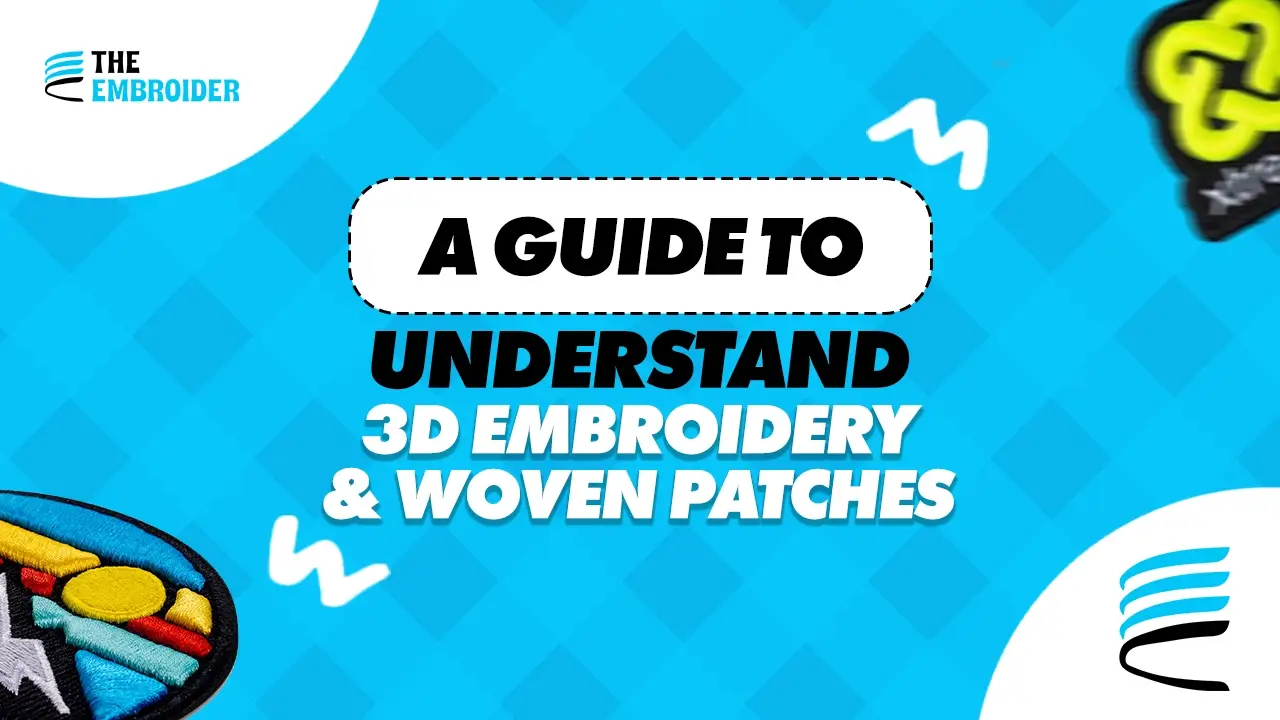Deciding between 3D embroidery patches vs woven patches means balancing texture and detail. Use 3D embroidered patches service for raised, standout designs, and custom woven patches when clarity and fine elements matter most.
3D Embroidery Patches vs Woven Patches: Know Their Differences
When comparing 3D patches to woven patches, it’s not just about how they look you need to consider thread type, texture, durability, and how your design will hold up in real use. Below, you’ll find not only features but also care tips, real-life observations, and advice from experts.
What Makes Woven & 3D Embroidery Different
- Woven patches are woven with very fine threads directly into the fabric, producing a flat, smooth texture ideal for precise lines.
- 3D embroidery combines thicker threads stitched above a base fabric, creating raised, textured elements that stand out visually.
So if your design includes very fine text or intricate detail, woven style generally handles it better. If your design is bold, wants to catch the light, or benefits from depth, raised embroidery may be the better choice.
More Insights: Why Texture & Detail Matter
According to World Emblem, woven patches are “thinner and more flexible,” allowing them to preserve sharp lines and intricate artwork especially for smaller designs.
Embroidered patches, by contrast, are thicker due to the heavy stitching and fabric backing. This gives them more body and stability — making a design “pop” visually, especially on backpacks, jackets, or hats.
These insights align with what we see in actual patch production: thin, flat designs benefit from woven structure, while bold textures get more impact with embroidery.
Durability, Cost & Use Cases
From our workshop experience:
- Raised embroidery often costs more per piece (more thread, more stitching), but can excel in high-wear environments.
- Woven patches are usually lighter and more economical when your design demands precision or is done in volume.
- Both styles hold up well if backing and stitching are done right, but embroidery tends to resist abrasion better when texture and thread thickness matter.
Backing Options & Application
Choosing the correct backing is as important as selecting your patch style:
- Sew-on backing provides the strongest hold and is best for items subject to heavy use.
- Iron-on backing offers easier application but may weaken over time under stress or heat.
- Velcro / Hook & Loop backing works when you want patches that can be removed or swapped.
We often advise clients using our 3D patches service to select sewn or heavy-duty backing for long-term application. For lighter or decorative items, woven patches often suffice with adhesive or iron-on backing.
Care & Maintenance Tips
To keep your patches looking great over time, these care practices are essential:
- Wash patched items inside out on gentle/cold cycles. Woven patches being thinner are less prone to snagging or distortion. For raised embroidery, avoid high heat or tumble drying.
- Strong backing matters – patches stitched or with sturdy backing survive harsher use.
- For outdoor gear or frequently used items (like backpacks or workwear), sewing or overlock edges helps prevent fraying of raised embroidery.
- Mind sun exposure: colors fade over time. Polyester threads usually retain color better in sunlight, so consider usage conditions when choosing your thread colors.
In one of our customer cases, a backpack with mixed patch styles initially showed wear on the woven part after a few warm washes. After switching to cold cycles, air drying, and reinforcing edges, both patches remained intact through multiple trips and washes showing how much care can extend patch life.
Common Pitfalls & Tips
- Avoid using textured embroidery for ultra-fine text, lines may blur.
- Don’t place thick patches on delicate fabrics, puckering or stress may occur.
- Always mock up the design at actual size. What looks good on screen can change once stitched.
- Consider combining approaches: use raised embroidery for bold shapes, and woven fills for detailed text.
Conclusion
Choosing between 3D embroidery patches vs woven patches comes down to the goals of your design: do you want texture and boldness, or detail and precision? With insights from experts, real workshop experience, and reliable care practices, you can confidently pick the right patch type for your project. If you’re ready, check out our patch services or browse our Types of Patches blog to see examples and get help choosing.
FAQ
Q: Which style works better for backpacks?
A: Raised embroidery usually gives more visual punch and holds better on tough fabrics like canvas or denim.
Q: Are woven patches less durable?
A: Not necessarily — with good weaving and backing, woven patches preserve detail and last long, especially when not exposed to extreme stress.
Q: Why is embroidery more expensive?
A: The higher cost comes from increased thread usage, stitching time, and additional finishing steps.
Q: Can one patch mix styles?
A: Yes — you can use raised stitching for logos or edges, and woven sections for fine text or detailed areas to take advantage of both techniques.

